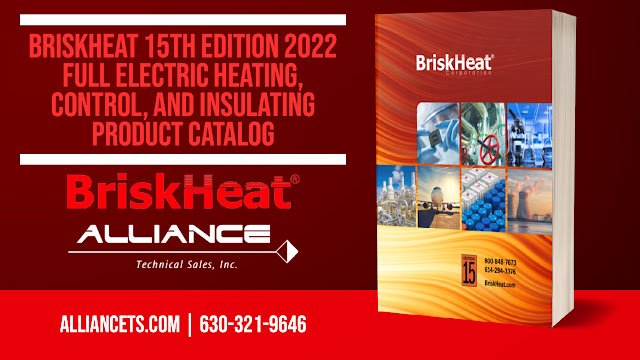An informative and educational resource specializing in process control instrumentation, analytical instruments, and related industrial equipment. Content includes technology basics, how-to's, new product developments, and application notes. Blog is courtesy of Alliance Technical Sales, a leading Manufacturers' Rep headquartered in Clarendon Hills, IL and serving customers in Illinois, Indiana, Iowa, Michigan and Wisconsin.
Process Analytics: Measuring pH, Dissolved Oxygen, and Conductivity
pH, dissolved oxygen, and conductivity are important parameters to measure in industrial processes because they can provide valuable information about the products' quality and safety. By measuring these parameters, industrial processes can ensure that they are operating within safe and optimal ranges, which can improve the quality and efficiency of the products.
pH
pH is a measure of the acidity or basicity of a solution, and it can significantly impact the behavior of chemicals in a process.
There are several ways to measure pH in industrial processes, including using a pH meter, pH test strips, and indicator solutions. A pH meter is a commonly used instrument that measures the pH of a solution by using a probe to measure the electrical potential difference between the solution and a reference electrode. pH test strips are also commonly used in industrial processes, as they are quick and easy to use and provide a general indication of the pH of a solution.
Dissolved Oxygen
Dissolved oxygen is vital because many industrial processes involve biological organisms that require oxygen to survive and function properly.
There are several ways to measure dissolved oxygen in industrial processes, but some of the most common methods include the following:
- Electrochemical sensors: These sensors use an electrode to measure dissolved oxygen concentration in a solution.
- Optical sensors: These sensors use light to measure the amount of dissolved oxygen in a solution.
- Membrane-based sensors: These sensors use a thin membrane to separate the sample being measured from the oxygen-sensitive material, allowing for accurate dissolved oxygen levels.
Conductivity
Conductivity is a measure of the ability of a solution to conduct electricity. It can provide information about the concentration of ions in the solution, which can be helpful in various applications.
Conductivity in industrial processes is typically measured using a conductivity meter. This device uses electrodes to pass an electrical current through a substance sample and measures the substance's resistance to the flow of electricity. The resistance converts into a conductivity reading, typically reported in units of siemens per meter (S/m).
It's worth noting that the most appropriate method for measuring dissolved oxygen, conductivity and pH in industrial processes will depend on the application's specific requirements. It's always a good idea to consult with an expert in the field to determine the best method for your particular needs.
METTLER TOLEDO provides analytical transmitters for a wide range of analytics, including pH/ORP, oxygen, dissolved carbon dioxide and conductivity or resistivity. These analytical transmitters are the component within a measurement system that communicates displayed measurements to a user or higher level control system. METTLER TOLEDO high-performance analytical transmitters offer compatibility with traditional analog sensors and digital sensors with METTLER TOLEDO's Intelligent Sensor Management (ISM).
Discuss your process analytics requirements with professional, skilled expert engineers. Alliance Technical Sales is available to assist in the application and specification of sensors, transmitters, and controllers for any industrial process. Call them at 630-321-9646 or visit their website at https://alliancets.com.
Winterization Tips for Your Building, Facility, or Industrial Plant
- Roof and Gutter: Inspect, remove debris, and patch/repair (if needed): roof drains, scuppers, canals, gutters, down spouts before first frost. Inspect and functionally test installed roof and gutter heat trace system. Apply heat in susceptible areas.
- Identify and test main water supply cutoffs for each facility. Ensure these areas are readily available to emergency personnel responding to a freeze/thaw incident. Apply heat in susceptible areas.
- Inspect wet‐pipe sprinkler systems for areas prone to freezing. Apply heat in susceptible areas.
- Identify materials that are subject to freeze damage in outside storage pads and unheated storage areas. Develop plan to ensure these materials can be easily heated and thawed to maintain production.
- Check and place antifreeze used in cooling systems as necessary.
- Protect heating system power and temperature controls against inadvertent deactivation.
- Inspect insulation on piping and vessels. Look for damage and vulnerable areas that might be exposed to freezing conditions. Add or replace insulation as needed.
- Drain and remove water from all seasonal cooling systems (unless protected by heating tapes or antifreeze).
- Inspect, test, and stage portable auxiliary heaters.
- Inspect conditions of all surface heaters such as heating tapes, heating cable, drum heaters, IBC heaters, tank heaters, and pipe heaters. Verify operation and temperature settings and test ground‐fault equipment protection. Replace as needed.
- Inspect, test, and repair heat trace heating cable located on cooling tower supply and return lines. Apply heat in susceptible areas.
- Inspect and identify remaining water and air lines subject to freezing. Install appropriate heat and insulation. Apply heat in susceptible areas.
- For steam systems: Blow down drip legs, clean strainers, test temperature sensing devices for actuation of control valves and dampers, check steam traps, control actuators/valves, face and bypass dampers, linkages, and temperature controllers. Ensure that a vacuum breaker is installed and in working order on all preheat and heating coils which may be exposed to freezing conditions.
- For ventilation systems: Test and calibrate all temperature sensing devices, and check operation of valves, dampers, linkages, control actuators, and temperature controllers.
- Identify areas where personal safety is at risk due to icy conditions. Develop a slip prevention maintenance plan. Apply heat in susceptible areas.
- Identify control panels and electronic devices susceptible to condensation. Install enclosure heaters to prevent short outs and corrosion.
- Institute a facility wide awareness plan to identify and report any suspected problems with heating or other cold weather protection equipment during the cold season.
- Special Consideration: Hazardous Materials
- Ensure that all containers used for hazardous or toxic materials are properly stored, and inspect them for deterioration prior to handling. If containers become brittle (due to the combination of chemical attack, freezing temperatures, and ultraviolet light) they may break when moved.
- Liquids should not be permitted to remain in unheated process lines during periods when production has been stopped. All lines should be drained and purged to prevent future line breakage due to freezing temperatures.
- Ensure that piping, tanks, and valves in systems that carry hazardous or toxic substances are properly insulated and/or heated. Install heaters such as heating blankets, insulators, heating tapes, heating jackets, and heating cable as appropriate.
ACURAGE™ Single Chamber Sight Glass with GWR from Hawk Measurement and Bliss Americas
Hawk Measurement and Bliss Americas Collaborate to Release the Industry's First Single Chamber Sight Glass with Guided Wave Radar.
The BriskHeat 15th Edition Full Electric Heating, Control and Insulating Product Catalog
For more information, contact Alliance Technical Sales.
Alliance Technical Sales
630-321-9646
https://alliancets.com





